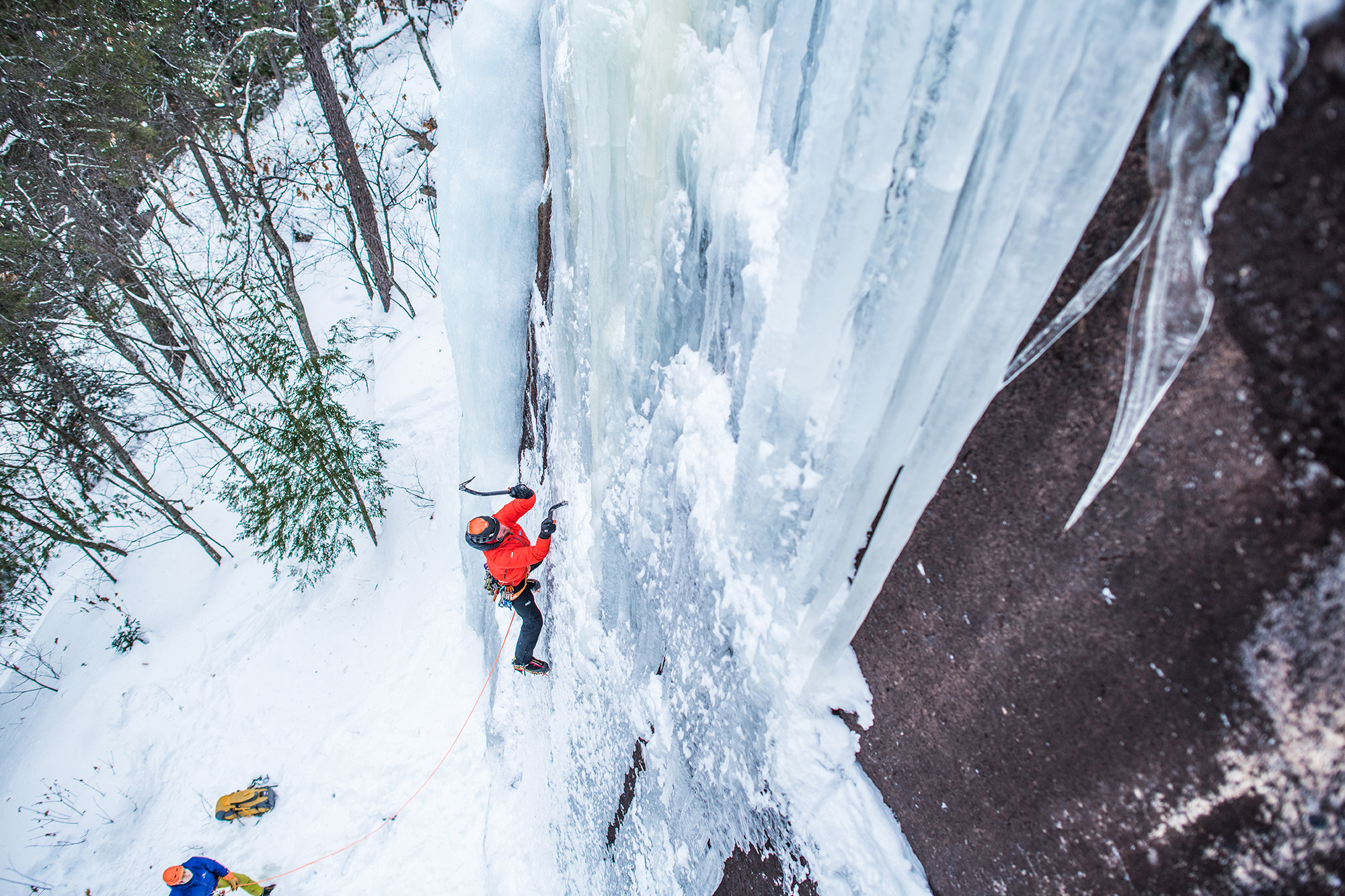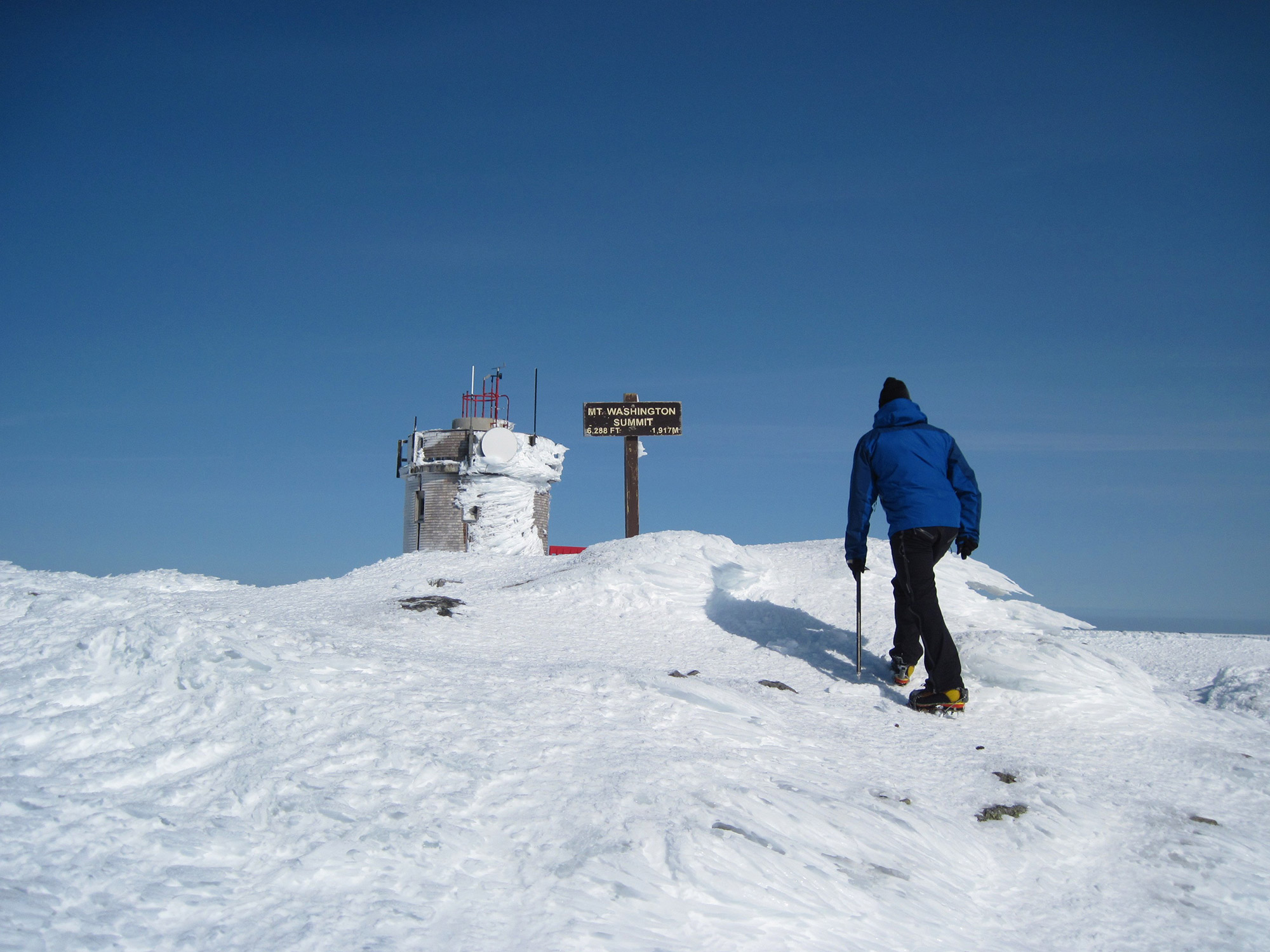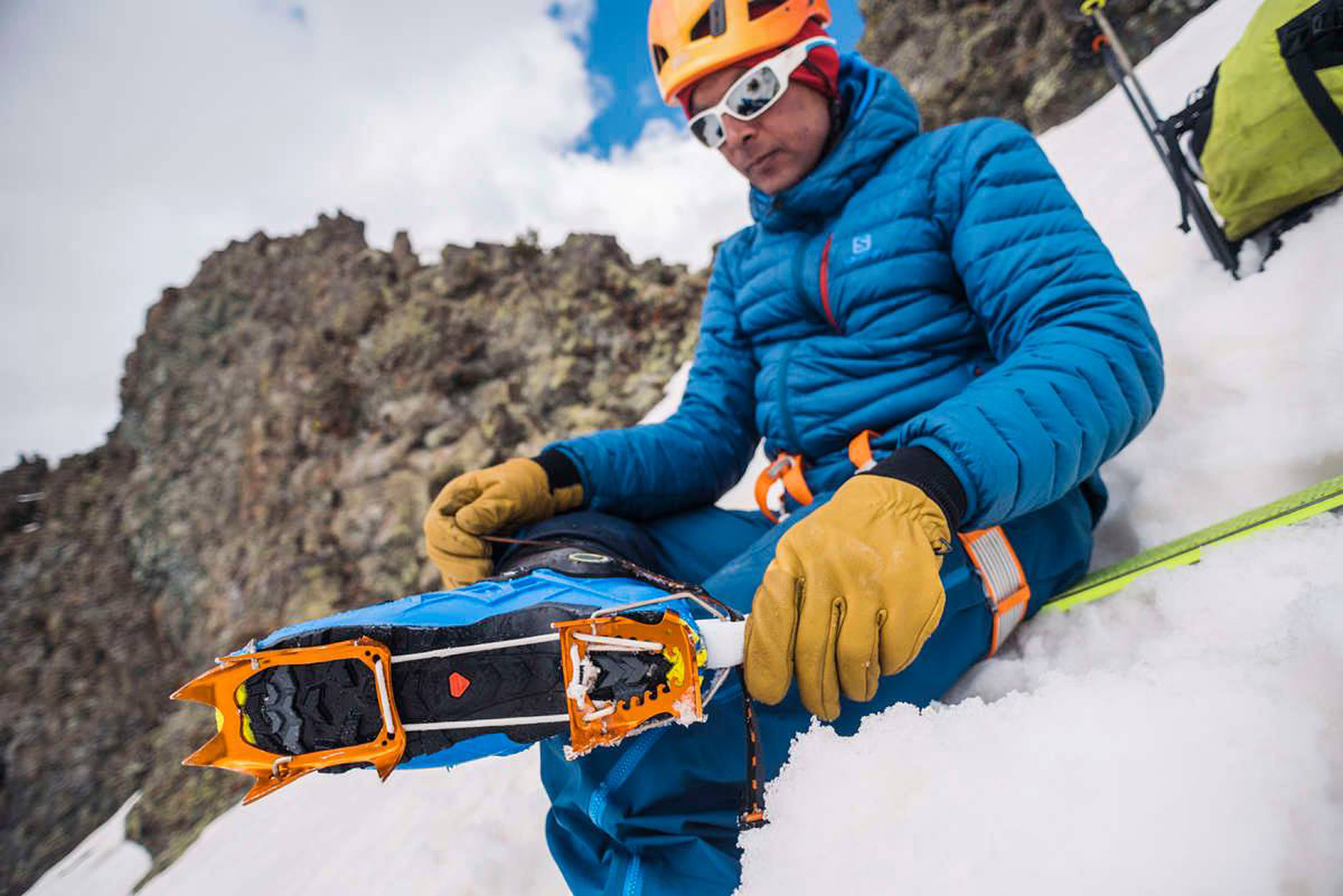When the mountains are covered in snow and summer’s flowing waterfalls turn into ribbons of ice, traction is the name of your winter travel game. But, when your objectives get more serious, crampons should be your footwear of choice. Whether you’re simply looking to climb a snow gully or become a mixed climbing master, you’re going to need crampons to keep from sliding off the snow and rock. Different crampon types suit different needs, though, so you’ll want to make sure you have the right hardware.

The Three Types
How you attach a set to your boots distinguishes one crampon type from another and offers insight into their intended use. There are three common attachment methods:
Step-In
Providing the most secure attachment, step-in crampons are a popular choice for technical objectives. In fact, you’ll frequently see them adorning the feet of ice climbers, technical mountaineers, and ski mountaineers. Step-in crampons use a lockable heel tab and a wire toe bail to securely stay in place on the boot. This setup requires that your boots have heel and toe welts for the tab and toe bail to clip into.
Almost all types feature some kind of webbing. For step-in models, the webbing prevents the crampon from taking a ride to the bottom of a route, in the event the attachment comes loose.
Hybrid
These crampons use the same lockable heel tab found on step-in models, but, instead of a step-in toe bail, have a flexible plastic loop that extends over the toe box. Hybrid crampons are commonly used with alpine climbing boots, which sacrifice an integrated toe welt for improved climbing ability without crampons.
Because of this, the webbing loop plays a more significant role on hybrid crampons. It helps keep the front secured to the boot and the heel lock engaged.
Strap-On
Because you can use them with almost any type of footwear, including mountaineering boots, hiking boots, snowboard boots, and approach shoes, strap-on crampons are the most versatile type. For this reason, they suit the person looking for one pair to do it all, although they’re best for walking activities, as opposed to climbing. Using the same type of flexible toe piece as hybrid models, strap-on crampons replace the lockable heel tab with another flexible plastic piece that wraps around the heel.

Number of Points
The number of points featured further indicates a crampon’s intended use. In general, there are two configurations: 10-point and 12-point. 10-points are ideal for basic mountaineering routes and snow climbs—for example, the Lion Head Winter Route. 12-points, meanwhile, are better suited for technical mountaineering routes and ice climbs, like Shoestring Gully.
Front Points
The orientation of the front points also shows where they will excel. Crampons with horizontal front points are best used for snow climbs and glacier travel, as the wide footprint provides more purchase in soft conditions, such as snow.
Vertical front points are the clear choice for ice and mixed climbing. In these instances, the points act like the pick of an ice tool, making them more adept at penetrating hard ice. Also, because the orientation aligns with the ice’s grain, vertical front points fracture ice less than horizontal front points.
Mono and Offset Front Points
Front points also have a number of other distinguishing characteristics. For vertical front points, mono points (i.e., a single vertical front point) have increased in popularity with ice, mixed, and alpine climbers. Mono points offer more precision than dual points and can fit into pockets, cracks, and grooves more easily.
Many high-end crampons allow users to switch between dual and mono points (modular front points). This feature enables climbers to reconfigure their crampons for particular activities and objectives. As another advantage, the front points can be replaced. As a result of sharpening, front points become shorter and less effective over the course of time. To learn more about sharpening your crampons, read 8 Tips to Prep for Ice Climbing Season.
Offset front points are another recent trend. Specifically, the crampon has two front points but one is longer than the other. Offset crampons, whether horizontal or vertical, offer the increased precision of a mono point with the better stability of a dual-point model.

Secondary Points
Secondary points also determine whether the crampon is intended for basic snow travel or technical climbing. As a good rule of thumb, the more aggressive and significant the points directly behind the front points are, the better the crampon is for technical and vertical climbing.
Materials
Anti-Balling Plates
These small pieces of plastic prevent snow from getting packed between your boots and crampons, and are essential if you’re going to be traveling on snow. Anti-balling plates attach to the crampon’s bottom to prevent snow and ice from caking up and sticking while you hike or climb. And, because you’ll likely see at least some snow, they come standard on almost all modern models.

Sizing Crampons
Most every crampon consists of two components, the front and heel pieces, connected by a center bar. The center bars typically have a string of holes, which let you adjust the crampons. In turn, the pair covers a wide range of foot sizes and can be sized to your specific boot. If you have really big feet, however, keep in mind that you might need to purchase a longer center bar from the manufacturer.
Pro Tip: If you already own mountaineering boots, bring them to the shop to test the crampons’ fit. Some brands might fit better, and it’s preferable to figure that out before you’re staring up at that dream ice climb.

So, Which Crampons Should I Get?
For snow climbs and classic mountaineering routes like Avalanche Gulch on California’s Mount Shasta, a lightweight pair of 10-point crampons with horizontal front points and anti-balling plates, like the Black Diamond Contact, is ideal. Step-in crampons offer better security, but any attachment method will work. Focus on finding a good fit between your crampon and mountaineering boot.
For more technical objectives involving snow climbing and steep ice, such as the Adirondacks’ Trap Dike, 12-point crampons with horizontal points and anti-balling plates are the perfect choice. A step-in attachment—like what you’ll find on the Black Diamond Serac Pro—is preferable.
For vertical ice climbing in the Adirondacks and the White Mountains, a 12-point crampon with vertical front points is the best choice. Crampons like the Black Diamond Cyborg Pro feature a step-in attachment and modular front points, so you can switch between a mono and dual setup. In turn, you can match your setup to the terrain or simply see which way you are more comfortable climbing. And, if you’ll be using your crampons with boots with and without toe welts, consider the Petzl Lynx Modular, known for adjustable bails depending on boot type.
For missions where weight comes at a premium—think alpine routes with some snow climbing sections or ski mountaineering missions in Tuckerman Ravine or on the Cog Railway—check out the ultra-lightweight Black Diamond Neve Strap Crampon. Weighing in at just 1 lb., 4.3 oz., these babies pack a punch without taking up much space in your pack.
GO: Crampons for Mixed Climbing | Mountaineering | Vertical Ice | Winter Hiking
Tim Peck and Doug Martland
Tim and Doug met long ago at the Eastern Mountain Sports in Canton, Massachusetts. Bonding over a love of slick Quincy Quarry granite, White Mountain sufferfests, and scheming up adventures while folding tee-shirts, today Tim and Doug collaborate to write about their favorite outdoor activities and occasionally get nostalgic about tee-shirt tables.




